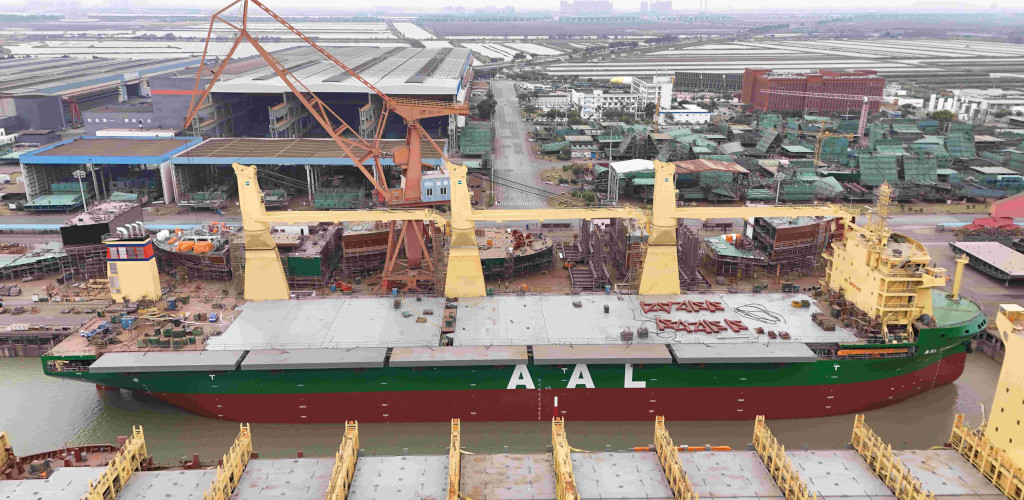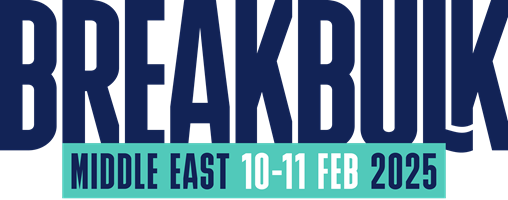Higher Insurance Premiums, Additional Security Needed
 By Carly Fields
By Carly Fields
Project cargo carriers, caught in the literal cross hairs of geopolitics, are having to make difficult trade routing decisions today.
The Red Sea routes are increasingly difficult to justify due to the risk of attack from Houthi-led rebels, threatening the safety of ships and crews. Yet, schedule slippage is never an easy conversation to have with shippers.
Christophe Grammare, CEO of AAL Shipping, explained that avoidance of the Suez Canal – compounded by the drought restrictions in the Panama Canal - have compelled vessels to take longer routes, significantly affecting voyage durations and supply chain schedules.
For instance, a voyage from Asia to Europe (or vice versa) requires an additional 10 days via the Cape of Good Hope compared with a voyage via the Suez Canal. It is 14 additional days for a cargo movement from Jebel Ali to Antwerp and 22 days for Porto Maghera in the Adriatic Sea to Jebel Ali.
“This will create issues for servicing the Mediterranean and Black Sea ports and potentially also for the Middle East region,” Grammare said. AAL is still offering customers sailings through the Red Sea but warned that this comes with heavy insurance premiums and security protocols.
“This ongoing situation is affecting not only voyage costs, but also global tonnage supply which, considering the increase in longer voyages re-routing around Africa, is limiting supply. This is harming supply chain schedules and pushing up freight rates.”
AAL said it is in constant contact with its technical managers, underwriters, and other security advisers to evaluate every voyage on a ‘case by case’ basis, prioritizing the safety of its crews, vessels, and customer cargoes.
Supply/Demand Outlook
 Speaking to Breakbulk, Grammare turned to multipurpose vessel supply and demand, acknowledging that while both are generally balanced, the Red Sea situation and reduced Panama transits have introduced a temporary supply/demand imbalance.
Speaking to Breakbulk, Grammare turned to multipurpose vessel supply and demand, acknowledging that while both are generally balanced, the Red Sea situation and reduced Panama transits have introduced a temporary supply/demand imbalance.
He highlighted the evolving dynamics of MPV ship capacity. Unlike the container market-driven capacity squeeze seen in prior years, the MPV market is now mainly influenced by non-containerizable cargo demand.
“On the MPV and project vessel front, we have seen investments driven solely by carriers, that is to say no speculative investment due to the unpredictable nature of the project and heavy-lift market demand – unlike the container world.” Added to which, it is exponentially more difficult to secure finance or find suitable yards for new buildings today.
“Newbuilding orders are being more carefully considered and mostly placed by the owner/operators themselves and only when they see a real market gap or need,” he said. “Another hurdle is the future proofing of new vessel design in view of the expected fuel and propulsion revolution that is bound to occur within the next 10 years.”
For its part, AAL takes delivery in May of the first in a series of six new 32,000 dwt Super B-Class with 3 x 350 ton lifting gear. Three more will be delivered this year and two in 2025. While other heavy-lift operators have also taken deliveries in the past few years and added new orders, the general feeling around orders is caution.
“Project carriers are very cautious about market demand and vessel supply after a decade of losses from 2009 to 2020 and mindful that freight rates and charter rates need to be at levels that are sustainable for everyone in the supply chain,” Grammare said.
Sustainable Moves
In the pursuit of sustainability, Grammare underscored the pivotal role of carriers in addressing ecological concerns and aligning tonnage availability with market changes. As project cargoes continue to grow in size and complexity, there is a notable shift towards specialized, project-oriented vessels equipped with heavy lifting capabilities.
“AAL with our focus on large project vessels with heavy lifting gear is right at the center of this continuous transformation. Our Super B-Class are focused on the ability to take larger cargoes,” Grammare said. However, he stressed the importance of striking a balance between sustainability initiatives and ensuring the viability of freight rates, emphasizing the need for partnerships and long-term contracts to mitigate supply chain risks.
“The huge variations in freight rates we have seen have been disruptive not only for cargo interests but for carriers with many years of extremely low levels. Every breakbulk project carrier will be careful not to create an oversupply scenario,” Grammare said.
“The Covid pandemic reminded cargo interests that supply is not unlimited, and therefore key cargoes, especially very large or very heavy, or high-volume, need to think about forward cover. Long term contracts and partnerships have been few and far between, but since the pandemic we have seen a change in this area.”
AAL will be exhibiting at Breakbulk Europe 2024 on 21-23 May at Rotterdam Ahoy.


